1. Resistive touch screen requires pressure to make the layers of the screen come into contact. You can use your fingers, even with gloves, nails, stylus, etc., to operate. Support for stylus is important in Asian markets, where gesture and text recognition are both valued.
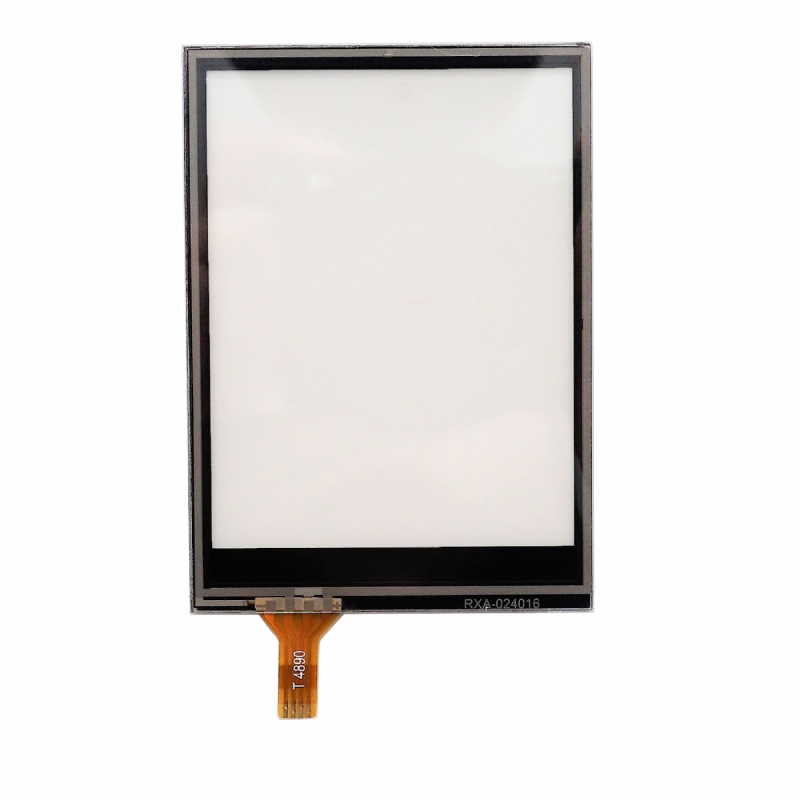
2. Capacitive touch screen, the smallest contact from the surface of a charged finger can activate the capacitive sensing system under the screen. Inanimate objects, fingernails, and gloves are not valid. Handwriting recognition is more difficult.
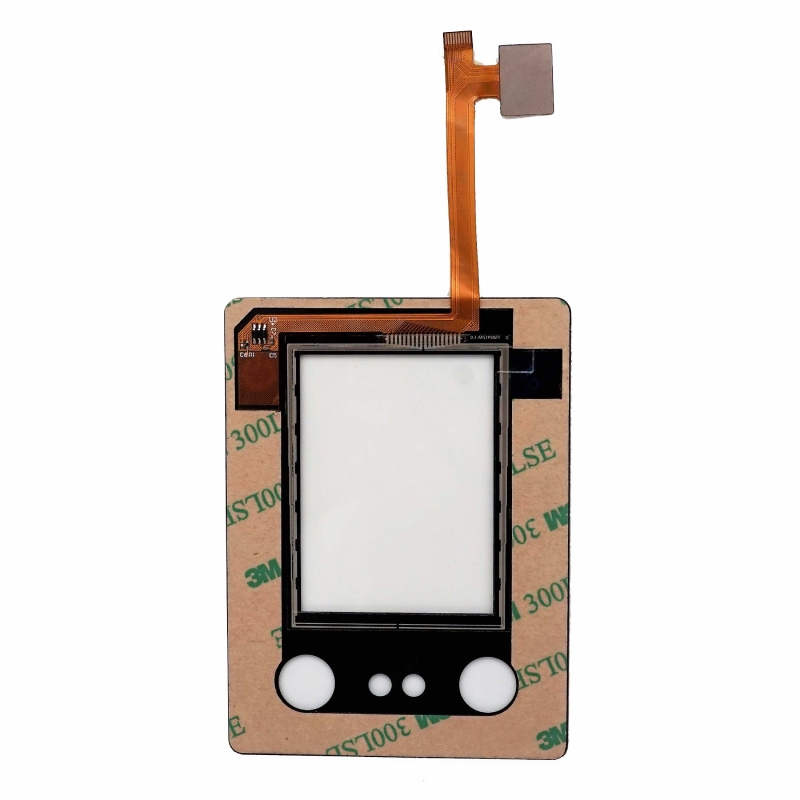
3. Accuracy
1. Resistive touch screen, the accuracy reaches at least a single display pixel, which can be seen when using a stylus. Facilitates handwriting recognition and facilitates operation in an interface using small control elements.
2. For capacitive touch screens, the theoretical accuracy can reach several pixels, but in practice it is limited by the finger contact area. So that it is difficult for users to accurately click on targets smaller than 1cm2. capacitive multi touch screen
4. Cost
1. Resistive touch screen, very cheap.
2. Capacitive touch screen. Capacitive screens from different manufacturers are 40% to 50% more expensive than resistive screens.
5. Multi-touch feasibility
1. Multi-touch is not allowed on the resistive touch screen unless the circuit connection between the resistive screen and the machine is reorganized.
2. Capacitive touch screen, depending on the implementation method and software, has been implemented in G1 technology demonstration and iPhone. The 1.7T version of G1 can already implement the multi-touch feature of the browser. lcd capacitive touchscreen
6. Damage resistance
1. Resistive touch screen. The fundamental characteristics of the resistive screen determine that its top is soft and needs to be pressed down. This makes the screen very susceptible to scratches. Resistive screens require protective films and relatively more frequent calibrations. On the plus side, resistive touchscreen devices that use a plastic layer are generally less fragile and less likely to be dropped.
2. Capacitive touch screen, the outer layer can use glass. While this won't be indestructible and may shatter under severe impact, the glass will handle everyday bumps and smudges better. lcd capacitive touchscreen
7. Cleaning
1. Resistive touch screen, because it can be operated with a stylus or fingernail, it is less likely to leave fingerprints, oil stains and bacteria on the screen.
1. For capacitive touch screens, you need to use your entire finger to touch, but the outer glass layer is easier to clean. lcd capacitive touchscreen
2. Capacitive touch screen (Surface capacitive)
The structure of the capacitive touch screen is mainly to coat a transparent thin film layer on the glass screen, and then add a piece of protective glass outside the conductor layer. The double-glass design can completely protect the conductor layer and sensor. projected capacitive touch panel
The capacitive touch screen is plated with long and narrow electrodes on all four sides of the touch screen, forming a low-voltage AC electric field in the conductive body. When the user touches the screen, due to the electric field of the human body, a coupling capacitance will be formed between the finger and the conductor layer. The current emitted by the four side electrodes will flow to the contact, and the intensity of the current is proportional to the distance between the finger and the electrode. The controller located behind the touch screen will It will calculate the proportion and strength of the current and accurately calculate the location of the touch point. The double glass of the capacitive touch screen not only protects the conductors and sensors, but also effectively prevents external environmental factors from affecting the touch screen. Even if the screen is stained with dirt, dust or oil, the capacitive touch screen can still accurately calculate the touch position. projected capacitive touch panelResistive touch screens utilize pressure sensing for control. Its main part is a resistive film screen that is very suitable for the display surface. This is a multi-layer composite film. It uses a layer of glass or hard plastic plate as the base layer, and the surface is coated with a transparent conductive metal oxide (ITO) layer. layer, covered with a hardened, smooth and scratch-resistant plastic layer on the outside (the inner surface is also coated with an ITO coating), with many small (about 1/1000 inch) transparent spacing between them Separate and insulate the two ITO conductive layers. When a finger touches the screen, the two conductive layers that are usually insulated from each other come into contact at the touch point. Because one of the conductive layers is connected to a 5V uniform voltage field in the Y-axis direction, the voltage of the detection layer changes from zero to Non-zero, after the controller detects this connection, it performs A/D conversion and compares the obtained voltage value with 5V to obtain the Y-axis coordinate of the touch point. In the same way, the X-axis coordinate is obtained. This is The most basic principle common to all resistive technology touch screens. projected capacitive touch panel
Resistive touch panel
The key to resistive touch screens lies in material technology. Commonly used transparent conductive coating materials are:
① ITO, indium oxide, is a weak conductor. Its characteristic is that when the thickness drops below 1800 angstroms (angstroms = 10-10 meters), it will suddenly become transparent, with a light transmittance of 80%. The light transmittance will decrease when it becomes thinner. , and rises to 80% when the thickness reaches 300 angstroms. ITO is the main material used in all resistive technology touch screens and capacitive technology touch screens. In fact, the working surface of resistive and capacitive technology touch screens is the ITO coating.
② Nickel-gold coating, the outer conductive layer of the five-wire resistive touch screen uses a nickel-gold coating material with good ductility. Due to frequent touching, the purpose of using a nickel-gold material with good ductility for the outer conductive layer is to extend the service life. However, the process cost is relatively high. Although the nickel-gold conductive layer has good ductility, it can only be used as a transparent conductor and is not suitable as a working surface for a resistive touch screen. Because it has high conductivity and the metal is not easy to achieve a very uniform thickness, it is not suitable for use as a voltage distribution layer and can only be used as a detector. layer. resistive touch panel
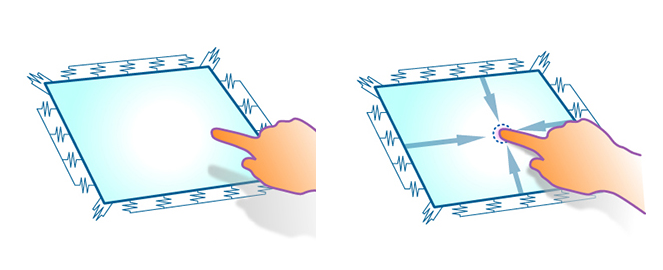
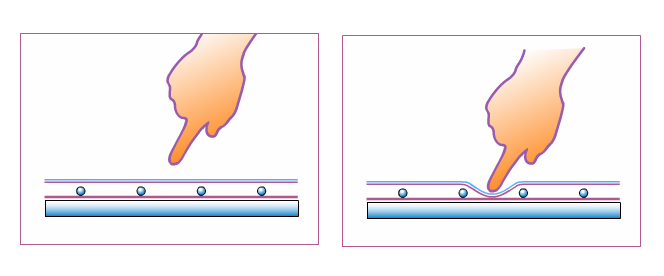
1), four-wire resistive touch panel (resistive touch panel)
The touch screen is attached to the surface of the display and used in conjunction with the display. If the coordinate position of the touch point on the screen can be measured, the toucher's intention can be known based on the display content or icon of the corresponding coordinate point on the display screen. Among them, resistive touch screens are commonly used in embedded systems. The resistive touch screen is a 4-layer transparent composite film screen. The bottom is a base layer made of glass or plexiglass. The top is a plastic layer whose outer surface has been hardened to make it smooth and scratch-resistant. In the middle are two metal conductive layers. There are many small transparent isolation points between the two conductive layers on the base layer and the inner surface of the plastic layer to separate them. When a finger touches the screen, the two conductive layers come into contact at the touch point. The two metal conductive layers of the touch screen are the two working surfaces of the touch screen. A strip of silver glue is coated on both ends of each working surface, which is called a pair of electrodes on the working surface. If a pair of electrodes on a working surface is applied voltage, a uniform and continuous parallel voltage distribution will be formed on the working surface. When a certain voltage is applied to the electrode pair in the X direction and no voltage is applied to the electrode pair in the Y direction, in the X parallel voltage field, the voltage value at the contact can be reflected on the Y+ (or Y-) electrode. , by measuring the voltage of the Y+ electrode to ground, the X coordinate value of the contact can be known. In the same way, when voltage is applied to the Y electrode pair but no voltage is applied to the X electrode pair, the Y coordinate of the contact can be known by measuring the voltage of the X+ electrode. 4 wire resistive touch screen
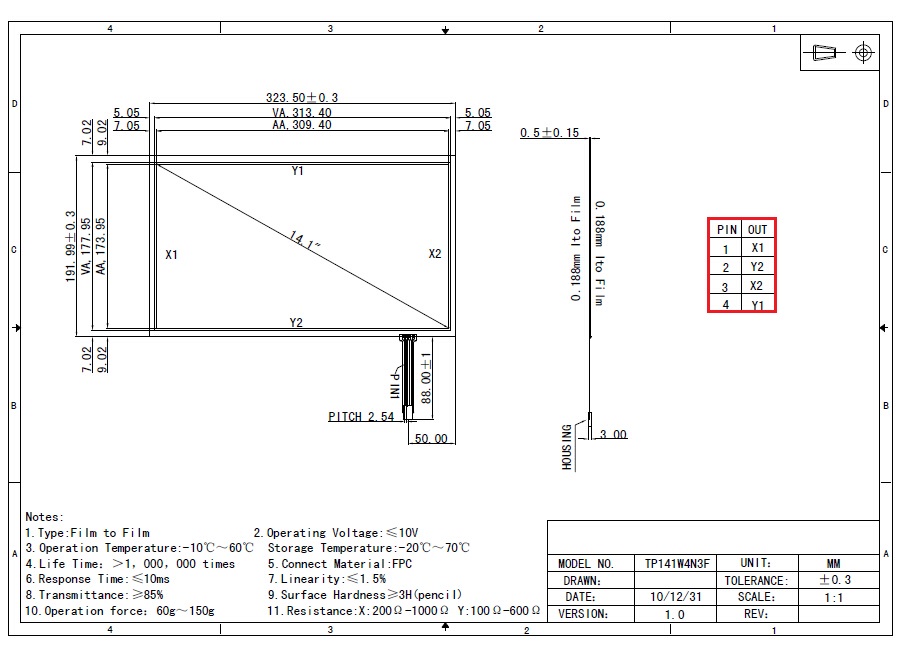
Disadvantages of four-wire resistive touch screens:
The B side of the resistive touch screen needs to be touched frequently. The B side of the four-wire resistive touch screen uses ITO. We know that ITO is an extremely thin oxidized metal. During use, small cracks will soon occur. Once cracks occur, The current that originally flowed there was forced to go around the crack, and the voltage that should have been evenly distributed was destroyed, and the touch screen was damaged, which was manifested as inaccurate crack placement. As the cracks intensify and increase, the touch screen will gradually fail. Therefore, the short service life is the main problem of the four-wire resistive touch screen. 4 wire resistive touch screen
2), five-wire resistive touch screen
The base layer of the five-wire resistance technology touch screen adds voltage fields in both directions to the conductive working surface of the glass through a precision resistor network. We can simply understand that the voltage fields in both directions are applied to the same working surface in a time-sharing manner. The outer nickel-gold conductive layer is only used as a pure conductor. There is a method of timely detecting the X and Y-axis voltage values of the inner ITO contact point after touching to measure the position of the touch point. The inner layer of ITO of the five-wire resistive touch screen requires four leads, and the outer layer only serves as a conductor. There are a total of 5 leads of the touch screen. Another proprietary technology of the five-wire resistive touch screen is to use a sophisticated resistor network to correct the linearity problem of the inner ITO: uneven distribution of voltage due to the possible uneven thickness of the conductive coating. 5 wire resistive touch screen
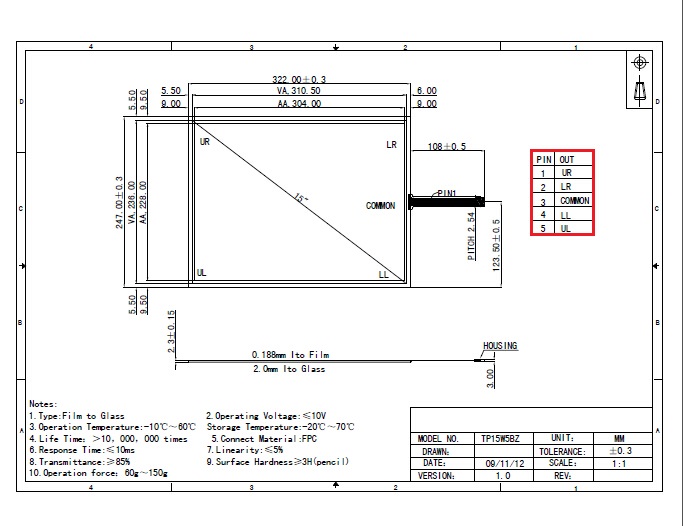
Resistive screen performance characteristics:
① They are a working environment that is completely isolated from the outside world and are not afraid of dust, water vapor and oil pollution.
② They can be touched with any object and can be used to write and draw. This is their biggest advantage.
③ The accuracy of the resistive touch screen only depends on the accuracy of the A/D conversion, so it can easily reach 2048*2048. In comparison, the five-wire resistor is superior to the four-wire resistor in ensuring resolution accuracy, but the cost is high. Therefore the selling price is very high. 5 wire resistive touch screen
Improvements to the five-wire resistive touch screen:
First of all, the A side of the five-wire resistive touch screen is conductive glass instead of a conductive coating. The conductive glass process greatly improves the life of the A side and can increase the light transmittance. Secondly, the five-wire resistive touch screen assigns all the tasks of the working surface to the long-life A side, while the B side is only used as a conductor, and uses a nickel-gold transparent conductive layer with good ductility and low resistivity. Therefore, the B side Life span is also greatly improved.
Another proprietary technology of the five-wire resistive touch screen is to use a precision resistor network to correct the linearity problem on the A side: due to the inevitable uneven thickness of the process engineering, which may cause uneven distribution of the voltage field, the precision resistor network flows during operation. It passes most of the current, so it can compensate for the possible linear distortion of the working surface.
The five-wire resistive touch screen is currently the best resistive technology touch screen and is most suitable for use in military, medical, and industrial control fields. 5 wire resistive touch screen
Welcome customers with needs to find us!
E-mail: info@rxtplcd.com
Mobile/Whatsapp/WeChat: +86 18927346997
Website: https://www.rxtplcd.com
Post time: Nov-01-2023



